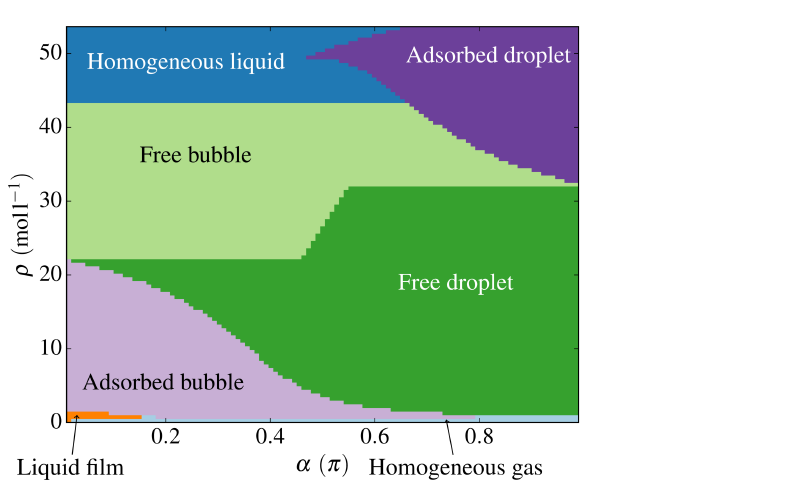PhD candidate Magnus Aa. Gjennestad (PoreLab/NTNU) and Senior Researcher/Professor Øivind Wilhelmsen (SINTEF/PoreLab/NTNU) recently published the paper “Thermodynamic stability of droplets, bubbles and thick films in open and closed pores” in Fluid Phase Equilibria.
In this work, a thermodynamic description was developed to study the stability of droplets, bubbles and films of water in a pore. For a particular set of conditions, several of these heterogeneous configurations may be possible. One way of determining which one is likely to occur is to calculate the energy and thermodynamic stability of these configurations. The stable configuration with the lowest energy is then the equilibrium structure. Which structure that was identified as the equilibrium state, depended strongly on the size of the pore and whether the pore was closed or open, i.e. connected to a particle reservoir.
Such knowledge is of importance for several applications. One example is hydrogen fuel cells where condensation of water may block flow paths, depending on which heterogeneous structure the liquid water takes, and be detrimental for performance. Another is sequestration CO2 in geological formations, where resistance of CO2 towards movement depends on the stability of the heterogeneous structure it forms. Mobile CO2 may be desirable during injection, but undesirable for long-term storage.
The work is a step towards developing a thermodynamic framework to map the rich heterogeneous phase diagrams of porous media and other confined systems. Link: https://doi.org/10.1016/j.fluid.2019.112351

